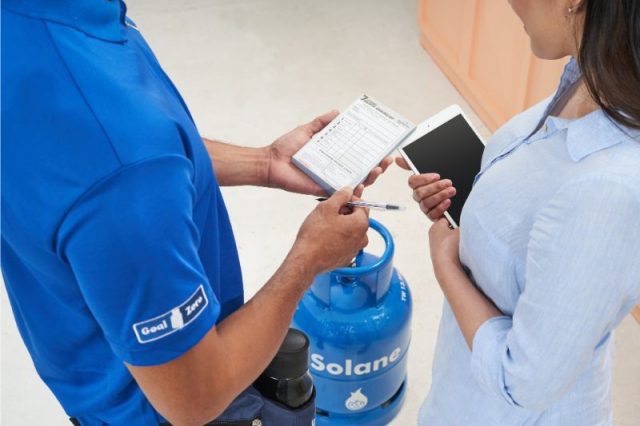
SPONSORED ARTICLES
A local energy provider shared tips on how to ensure the safety of liquid petroleum gas (LPG) tanks amid recent reports of LPG-induced fires.
According to LPG solutions provider Solane LPG, there are seven simple steps to verify that an LPG tank is sound. These are as follows.
Place in a well-ventilated area
Unlike the common practice of hiding LPG tanks inside kitchen cabinets, the gas distributor recommended that tanks should be placed in a well-ventilated area. This will allow gas to escape instead of accumulating in case of a leak.
When setting the tank in an open area, it should not be under direct sunlight, rain, dust and heat. This will help avoid an explosion if the LPG tank is exposed to an ignition source.
Check the O-ring for damages
The O-ring inside the valve stops gas leaks— if it has no damage. If it has scratches or cracks, it needs to be replaced by the LPG distributor. Repairs may also be done, but only by certified personnel.
Replace the regulator every three years
The regulator, which reduces the LPG’s pressure to become usable for the cooking appliance, must not have any damage.
A defective regulator may also harm the other elements of the tank. The safest way to ensure this is to replace it regularly, specifically every three years.
Ensure that the regulator is connected to the valve
Securing the connection between the regulator and the valve will allow the LPG to flow smoothly to an appliance. To do this, the screws must be checked and in great shape.
Keep the hose in good condition
The hose is commonly the problem area of an LPG tank, especially if it is damaged or has expired.
To avoid a gas leak, it is ideal to change the hose every two years.
It is also safer to use a short hose since bending long hoses can affect not only the hose but also the gas.
Secure hose connection
The hose connection is secured by metal clamps on both the LPG and the appliance. This will avoid unnecessary movements of the hose and prevent gas leaks.
Always check if the metal clamps are in good condition.
Check the flame’s color
The flame quality can be examined through its color.
A blue flame would signify that the gas is being used efficiently and that the LPG is working properly.
Solane LPG also offers free safety checks to its customers each time an LPG tank is installed in their homes.
How to keep LPG tanks safe in seven simple steps
Source: Filipino Trend Viral
0 Comments